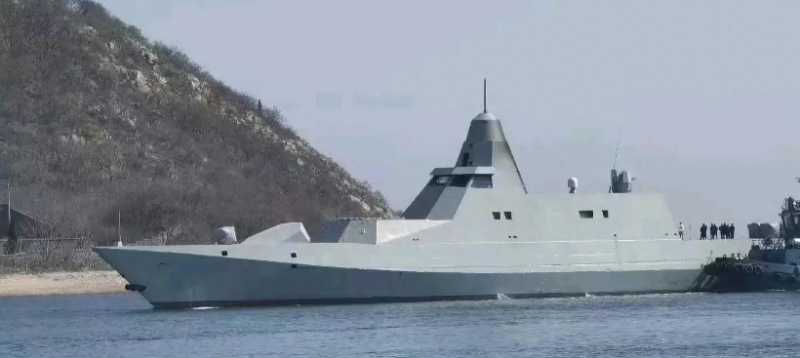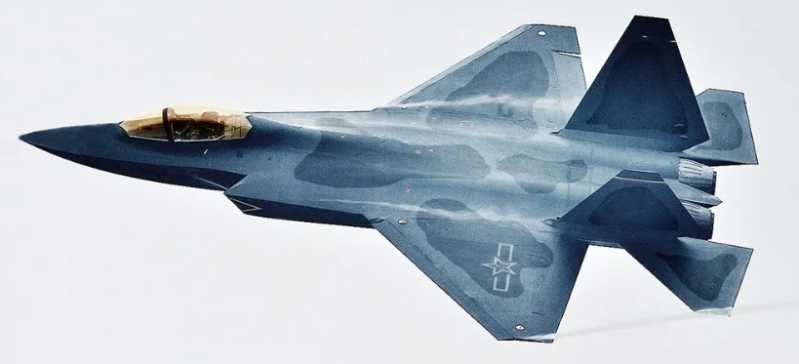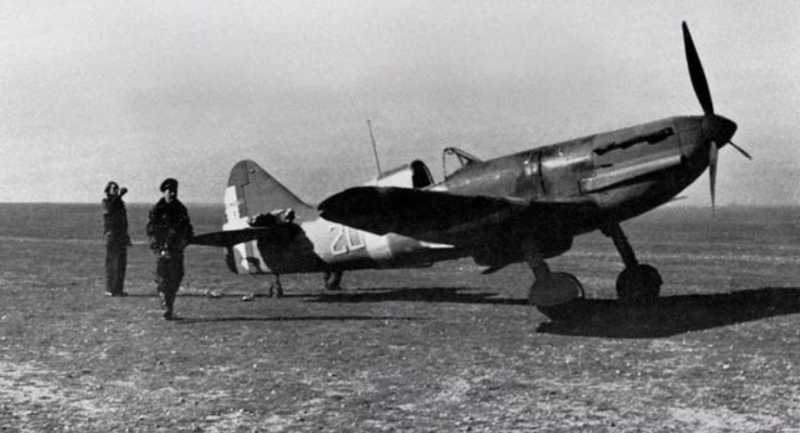Demand for Ukrainian military drones
The history of Ukrainian military drones can be traced back to the Tu-143, which was left over from the disintegration of the Soviet Union and was not retired until 2010. However, these Soviet legacies did not bring substantial improvements to the combat effectiveness of the Ukrainian army except for consuming military expenditures. For a long time, the Ukrainian army was completely blank in the field of drone equipment.
In the domestic turmoil in Ukraine that began to intensify in 2014, and the subsequent direct conflict with the Russian army, the Ukrainian army was completely unable to compete with the Russian army, and even when facing regional armed forces supported by Russia, it could not gain any advantage. For Ukraine, which is short of military expenditures, conventional military equipment is simply not enough to cope with it.
At the same time, in the Middle East and North Africa, advanced unmanned equipment such as reconnaissance and strike drones and cruise missiles have continuously achieved brilliant results, presenting a typical small-scale and asymmetric combat style. Faced with the low-tech separatist forces in the country frequently using various drones to conduct cross-border reconnaissance with the support of Russia, and the real threat of dozens of naval and air military bases surrounding Ukraine, the development and equipment of drones has become the best choice for Ukraine. On the one hand, it can monitor and reconnaissance in real time and carry out strikes when necessary. On the other hand, in wartime, it can take advantage of the weakness of some Russian air defense firepower in detecting small, slow and low targets to carry out harassment operations.
The current status of the development of various Ukrainian military drones
Faced with such urgent needs, Ukrainian domestic enterprises, which have accumulated a blank in the field of drone technology, have either developed their own research or developed through international cooperation. They have successively developed a number of reconnaissance drones and have successively entered the Ukrainian Air Force, Army and paramilitary armed forces.
The Ukrainian Air Force is currently equipped with three types of drones. The first type is 72 RO-11B hand-thrown electric reconnaissance drones purchased from the United States in 2016; the second type is several 21 kg ACS-3 "Lightning Bird" reconnaissance drones developed by the country’s Skadden company established in 2006 and equipped in July 2019. This type of drone adopts a unique double-tail support pull configuration, and a small optoelectronic turret is installed under the belly of the aircraft. The normal combat reconnaissance altitude is about 1 km. It is launched using a ground zero-length catapult and recovered using a small parachute. The aircraft has a cruising speed of about 120 km/h and has long-flight reconnaissance capabilities. On September 5, 2019, it also set an ultra-long endurance record of 27 hours. The third type is several Turkish TB-2 equipped with troops in 2019 Reconnaissance and attack drones.
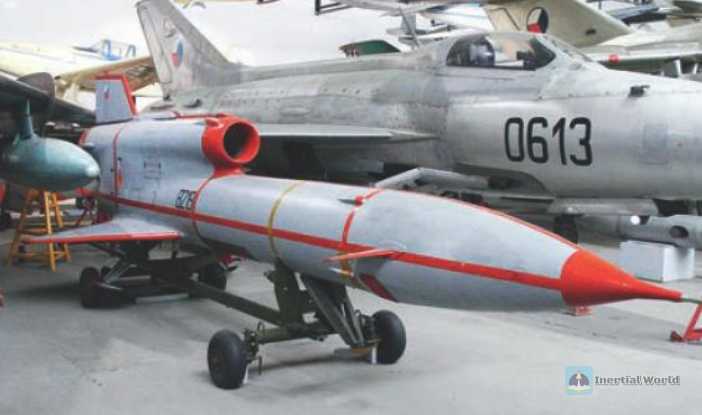
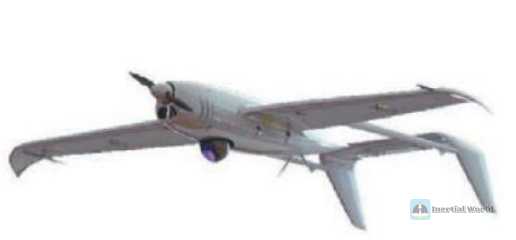
The Ukrainian Army is currently equipped with 7 types of drones totaling hundreds of drones. The earliest drone equipped by the Ukrainian army (2015) came from the private Spytech company established in 2012. Thanks to the composite material structure, this electric reconnaissance drone named "Sparrow" has a maximum take-off weight of only 3.3 kg. It adopts a very rare flat tailless structure with two stabilizing end plates. It can achieve 1 hour of endurance and 20 kilometers of daytime optical reconnaissance capability. A set of "Sparrow" tactical reconnaissance drone systems, including remote control, measurement and control antenna, replaceable batteries and reconnaissance payload, and 3 drones, can be carried by a single soldier and quickly deployed in hidden areas on the front line. According to reports, the company’s "Sparrow" and "Sparrow" LE also participated in the 2019 India’s weapons tender in 2020. During the "Joint Resolve-14" international military exercise held in Germany in September 2020, the participating Ukrainian Army and the US Army detachment jointly used the "Sparrow" drone to conduct aerial reconnaissance of the simulated combat area. A month later, on October 15, the company’s latest "Falcon" three-axis rotor reconnaissance drone was also officially approved by the Ukrainian Ministry of Defense to enter the military service, but the specific number and equipment targets are still unclear.
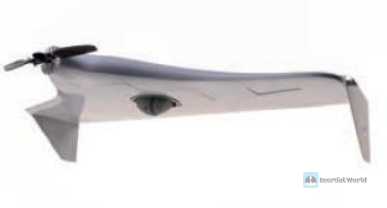
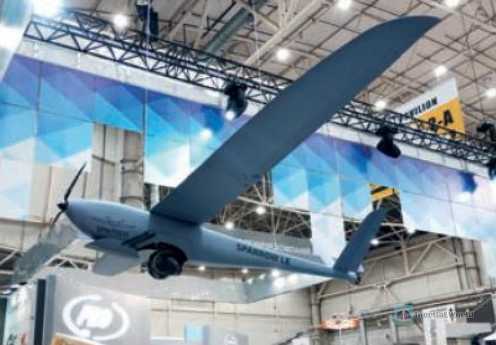
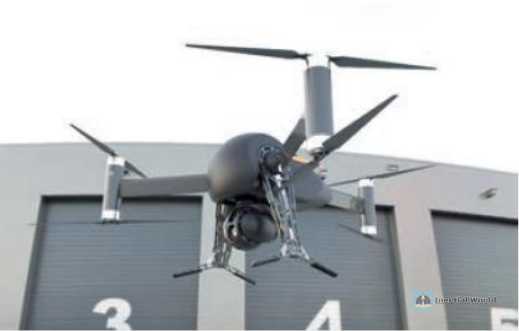
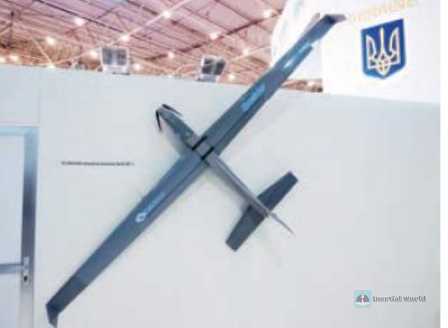
Also in service in 2015 were more than 40 A1-C "Fury" from the country’s private Atron company and in 2014 The Leleka-100 of the Ukrainian Aviation System Company, which was established in 2001. The former is mainly used for artillery unit calibration and damage assessment. It was frequently used in the battle in the Donetsk region. It was originally claimed to be "purely" Ukrainian domestically produced, but was later found by the army user unit to have the same system structure as a civilian UAV sold in a certain country on a well-known shopping website, but the price was far different.
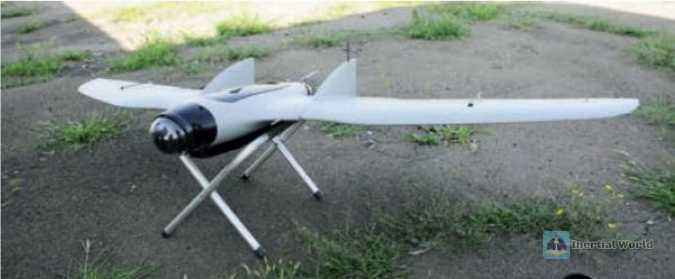
Leleka-100 is an electric UAV with a maximum take-off weight of only 5.5 kg. It takes off by catapult and lands with the help of cushioning airbags for recovery. The mission payload can be selected from three sensor payloads: 4x high-resolution aerial survey camera, 20x daytime high-definition or 4x zoom night infrared CCD. The maximum measurement and control radius of the aircraft is 45 kilometers, and it has the ability to transmit 720P images in real time within the maximum measurement and control range. With a maximum endurance of 2.5 hours and a maximum flight altitude of 1,500 meters, it is the best-performing unmanned tactical reconnaissance aircraft in the Ukrainian Army and one of the few active drones that has participated in the Ukrainian National Day Independence Parade.
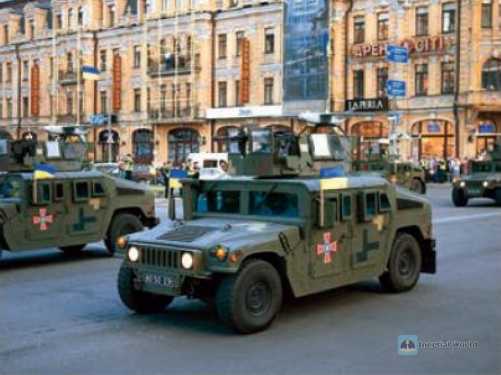
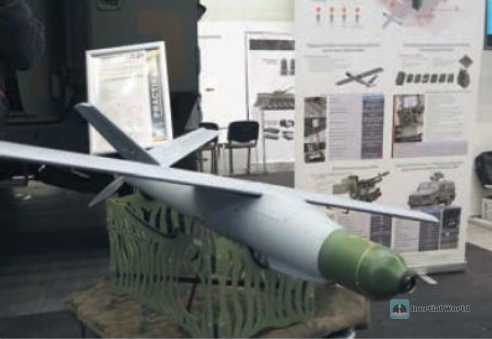
The "Spectator" M, which entered service in 2016, comes from the state-owned Ukroboronprom company established in 2010. This is a 5.5 kg hand-thrown electric reconnaissance drone that uses a civilian general-purpose aircraft model platform, with a measurement and control radius of 30 kilometers and a flight time of 2 hours. In 2019, the Ukrainian Army once again purchased several batches of upgraded "Spectator" M1 models. This model focuses on upgrading reconnaissance equipment, increasing the maximum use radius to 50 kilometers, and realizing the common coordinate system of the drone reconnaissance system and the artillery system. According to the Ukrainian side, this type of drone has been put into use by troops near the Crimea region.
The "Observer" S reconnaissance drone and the "Comrade" cruise missile system were put into service in 2018. The "Observer" S has a very novel appearance design. The main body of the aircraft consists of wings and lightweight connecting rods. The cocoon-shaped reconnaissance pod is installed at the bottom of the aircraft, which has a strong ability to quickly replace and repair damage in battle. The aircraft weighs 5.8 kg and has a flight time of 2.5 hours, which can effectively meet the tactical reconnaissance needs of ground forces. The "Comrade" cruise missile is manufactured by the local Avia company using the technology introduced by the Polish WB Electronics Company. The maximum take-off weight of the cruise missile is only 5 kg, the cruising time does not exceed 2 hours and the control radius is within 15 kilometers; the warhead of about 1 kg has different types such as high explosive, shaped charge and fragments. In comparison, the nearly 100-kilogram cruise missiles such as the Israeli "Harpy" can scout and strike heavily armored targets for several hours. Due to its weak reconnaissance capability, an additional Avia Flying Eye reconnaissance drone is required in a set of three "Comrade Cruise Missiles" system. There has been no actual combat report of this type of cruise missile.

In addition to the above-mentioned models that have been determined to be equipped to the troops, Ukrainian domestic enterprises have also launched many reconnaissance drones, among which Avia’s ST-35 "Silent Thunder" cruise missile system has a unique design. It is carried by a multi-axis unmanned rotorcraft and released at high altitude, which can save fuel and battery consumption and take off at zero distance. However, none of these models have received orders yet.
Through years of hard work, Ukraine has achieved certain results in the field of reconnaissance drones, but the research and development capabilities of these state-owned or private enterprises are hovering below 100 kg for low-tech short-range reconnaissance drones. For this reason, Ukraine has In 2018, a multi-pronged approach to the development of reconnaissance and strike drones began. For example, under the background of defense cooperation between Turkey and Ukraine, the domestic AL-450 turboprop engine was used to jointly develop the "Flying Fish" high-altitude reconnaissance and strike drone with Turkey; several batches of Turkish TB-2 were purchased for the Air Force in exchange for the establishment of a joint production and sales company. On the other hand, domestic manufacturers have also come up with their own solutions, such as the 200-kilogram "Turtle Dove" AN-BK-1 reconnaissance and strike drone of the Antonov Design Bureau, which has completed its first flight and also plans a high-altitude long-flight reconnaissance model. The Guangguang Design Bureau released the "Falcon" 200 reconnaissance and strike drone.
In addition to the army, the Ukrainian National Guard and the civilian armed forces formed after the conflict in 2014 are also equipped with a number of civilian aerial photography drones such as the "Elf" and "Wu" series of China’s DJI Company, which are used for short-range image reconnaissance missions in the two northeastern states, but they are interfered and captured by local armed forces and the Russian army using various military and civilian anti-drone electronic warfare equipment.
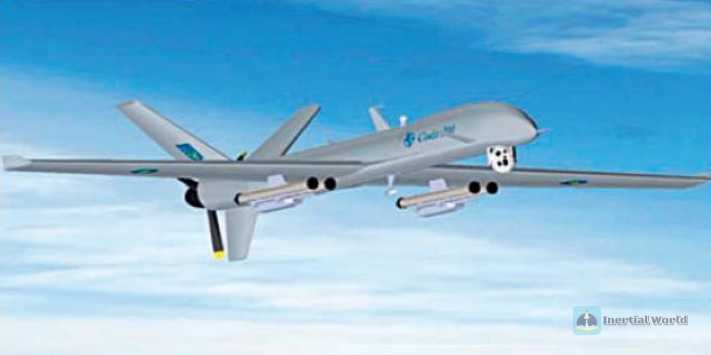
The design details of the "Falcon" 300 are full of complaints
Speaking of the Light Design Bureau (hereinafter referred to as the Light Design Bureau) under the Ukrainian State-owned Kiev Design Bureau, everyone must have heard of it. In recent years, the R-360 "Neptune" shore-to-ship missile system and the "Pirate" individual anti-tank missile that have been hot-selling in the international arms market are all from this bureau. The bureau was established in 1965 and was originally the main research and development unit of the Soviet special aircraft equipment control and fault automatic diagnosis system. The famous R-77, R-27 air-to-air missiles, Kh-29, Kh-59, Kh-31 The automatic servo control system of air-to-ground missiles and a variety of Soviet anti-submarine missiles is the masterpiece of the bureau. After the disintegration of the Soviet Union, in addition to continuing its old business, it also transformed and carried out the development of various weapon systems such as individual, vehicle-mounted and airborne anti-tank missiles, long-range rocket launchers, anti-ship missiles and ship-borne light air defense missiles. Especially after the serious deterioration of Russian-Ukrainian relations in 2014, it developed a variety of anti-tank missile weapons in a short period of time. In addition to greatly alleviating the pressure on the Ukrainian Army, it was also widely exported to Turkey and other countries to earn foreign exchange. It can be said to be a model of old trees sprouting new buds. In July 2020, the chief designer of the Guangguang Design Bureau introduced a reconnaissance and strike drone called "Falcon" 200 in an interview, and announced the design drawings and some design concepts and technical parameters. In early November 2020, the Guangguang Design Bureau publicly displayed the first full-scale model of the independently developed "Falcon" 300 reconnaissance and strike drone. Combined with the high degree of overlap in the details of the introduction of the two drones by the Guangguang Design Bureau, the "Falcon" 300 should be the "Falcon" 200. The official model.
In terms of aerodynamic layout, the Falcon 300 adopts the same classic layout as the Predator Anka and other reconnaissance and strike drones - a large aspect ratio main wing with a V-shaped tail pusher layout, but there are many differences in many design details. For example, the main wing adopts an upper wing design and is equipped with winglets, but from the Turkish Anka B prototype flight test phase installed with winglets but cancelled in the mass production phase, the MO-9 reconnaissance and strike type was upgraded to the "Guardian" series long-endurance reconnaissance type. Winglets were added during the process, and other improved models were replaced with ARC-210 radio antennas. The trade-off between the final drag reduction effect obtained by this design and the weight and structural cost must be verified through complex theories and actual test flights at different ranges and altitudes.
From the rough right-angle upturned winglets and wing structure of the Falcon 300, as well as the shorter main wings of the Predator, Rainbow, Wing Loong and Anka, which are also 8 meters long, it can only be seen that the designers attach great importance to the endurance of the aircraft, but there is still a lack of in-depth design verification. Its tail design is similar to that of the MO-9. A drooping tail is added to the conventional V-shaped tail. Although it can protect the propeller and power system during takeoff and landing, and can improve the sideslip yaw and realize the backup redundancy of the rudder surface, it is bound to increase the weight of the relevant control mechanism and ultimately affect the load. Moreover, many mature models have long proved that a simple V-shaped tail is sufficient to meet the needs.
The landing gear structure of the Falcon 300 is exactly the same as that of the Anka series. It adopts a retractable design that can be stored backwards. The main landing gear adopts a flat spring frame structure and realizes take-off and landing buffering through elastic deformation. The front landing gear adopts a spring connecting rod structure with better shock absorption effect.
Usually, reconnaissance and attack drones will be equipped with an optoelectronic turret and a SAR radar on the nose and the middle belly respectively. However, in addition to the optoelectronic turret, which is conventionally arranged under the nose and in front of the front landing gear, the other detection device is installed in the fairing above the nose of the Falcon 300, while most similar drones usually install satellite communication system antennas here. The traditional configuration places the load at the center of gravity of the drone (the belly before and after the main wing), and the arrangement of the Falcon 300 will cause the center of gravity of different engine configurations to change, which will affect flight control and is not conducive to the SAR radar to perform the lateral ground telemetry function. The only advantage may be the reduction of additional aerodynamic drag. In short, judging from the existing data, the aerodynamic design of the Falcon is full of flaws.
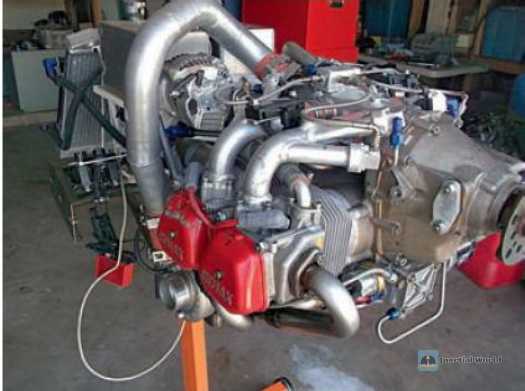
Underpowered replaceable engine design
The power system is the biggest selling point of the Falcon 300. It can be equipped with 3 different engines to form 3 sub-models according to the different needs of users for the combat altitude, cruising time and reaction time (speed), but the aerodynamic shape and load parameters of the three are basically the same, all with a length of 8.57 meters, a wingspan of 14 meters, and a maximum load of 300 kilograms.
The first is the medium-altitude long-endurance model using the Rotax 914 series engine. From the 912 type used by the 500 kg Turkish TB-2 and the Iranian "Mohajer" 6, to the 914 type used by the American MO-1 and the Israeli "Heron" above 1 ton, the Rotax series aviation gasoline piston engine is the preferred power for most reconnaissance and strike UAVs in the world. Its civilian attributes make it convenient for import and export, mature and reliable, and low-cost. In particular, the cruising fuel consumption of only tens of liters per hour directly connects the fixed-wing reconnaissance and strike UAVs with long flight time characteristics.
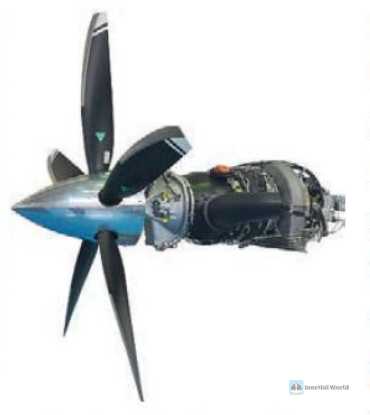
The Rotax 914 model used in the Falcon 300 is a four-cylinder, four-stroke, water-cooled engine. With a full set of accessories such as a first-stage supercharger turbine, the total weight is about 75 kg, and the maximum output power is 73.5 kilowatts (about 100 horsepower), which can ensure 90% power output at an altitude of 4,500 meters. However, since the power drops very quickly with the increase in altitude, the maximum normal working altitude is mostly around 5,000 meters. The Falcon 300 using this engine can achieve an ultra-long endurance of 26 hours and a range of up to 3,300 kilometers, which is basically at the same level as other reconnaissance and strike drones using this engine. However, due to the power limit of this engine, the maximum flight speed of the drone is only 210 kilometers per hour, and the long-term cruising speed is only about 150 kilometers per hour. It takes a long time to enter and exit the war zone, which is not conducive to shortening the reaction time. Fortunately, the Falcon 300 is currently used mainly for short-range use. Due to the small weight of the engine, the fuselage of this Falcon 300 weighs only 420 kg and the maximum take-off weight is 1,130 kg. The second model is a high-altitude and high-speed model using the MS-500V-05C turboprop engine of the country’s Motor Sich Engine Company. This type of engine was originally used for helicopters, and then the turboshaft was converted to a turboprop on its basis, with a power of 689 kilowatts (about 950 horsepower). The Falcon 300 using this engine can reach a maximum flight speed of 580 kilometers per hour and a cruising speed of 335 kilometers per hour. In contrast, the maximum speed of the American MO-9 using the 730-kilowatt TPE-331-10 turboprop engine is only 444 kilometers per hour. However, this Falcon 300 is subject to limited fuel carrying capacity and the fuel consumption of the turboprop engine is 10 times that of the gasoline piston engine, and the endurance time is reduced to a pitiful 3 hours. The empty weight of this Falcon is 535 kg, and the maximum take-off weight is 1,225 kg.

The third type is a high-altitude and high-speed type equipped with the A1-450T2 engine of the Ukrainian Progressive Mechanical Design and Manufacturing Bureau. This engine was designed in 1998 and was also planned to be used for helicopters. It was not until 2002 that the turboprop type was improved on the basis of the turboshaft model. As early as 2018, during the military cooperation between Turkey and Ukraine, 4 units were successfully exported, becoming the first flight power of the twin-engine 5.5-ton reconnaissance and attack UAV "Flying Fish" (Akinci) developed by Beka Company, the TB-2 developer and manufacturer, and Ukraine in the large-load multi-purpose UAV project launched by Turkey in 2016. So far, a total of 10 units have been exported to Turkey, so the Falcon 300 can only be regarded as the second UAV that may be equipped with this engine. According to the Guangguang Design Bureau, this engine weighing 103 kg and with an output power of 331 kW can enable the Falcon to have a maximum flight speed of 466 km/h and a cruising speed of 275 km/h. Through the Falcon’s unique aerodynamic design such as the high aspect ratio wing, its maximum flight time has reached 5 hours.
Objectively speaking, the Falcon 300 is equipped with different engines to meet the combat needs under different air defense fire threats. This shows that the Guangguang Design Bureau has conducted a specific analysis of the UAV combat environment in Libya and the Nagorno-Karabakh region in recent years, and has seen the long flight time of UAVs in low-intensity battlefields and the demand for high altitude and high speed under certain air defense threats. However, from the actual performance point of view, this type of high-horsepower turboprop engine is usually equipped with MO-9 and other UAVs above 3 tons. The Falcon’s design concept of changing the engine without changing the aerodynamics, while replacing the high-power engine, the fuel capacity remains the same, so while the speed is increased, the fuel consumption is also increased simultaneously, but the range is greatly reduced.
Other designs of borrowing and forced combination
According to the Guangguang Design Bureau, the Falcon UAV system borrowed and continued to use some mature subsystems of the domestic Neptune shore-to-ship missile system to a large extent during the design stage. For example, the airborne navigation system uses the same GPS+INS+ digital map solution; the ground control station directly uses the latter
The command and control cabin software and hardware design of the RKP-360 mobile command vehicle can be modularly combined while having strong mobility, allowing users to use various types of military and civilian trucks and trailers in their own country to simplify logistics support. The single ground station line-of-sight measurement and control radius of the Falcon is about 150 kilometers. When relayed by ground control or a UAV equipped with a repeater, it can be expanded to a maximum of 300 kilometers, while the measurement and control radius of reconnaissance and strike UAVs of the same tonnage is generally 200~250 kilometers. Judging from the CG image of the Falcon drone, there is only one knife-shaped antenna on the fuselage but no microwave band antenna. This may be because the ground station uses a broadband UHF band measurement and control link, which ultimately shortens the measurement and control radius to meet the need for anti-interference.
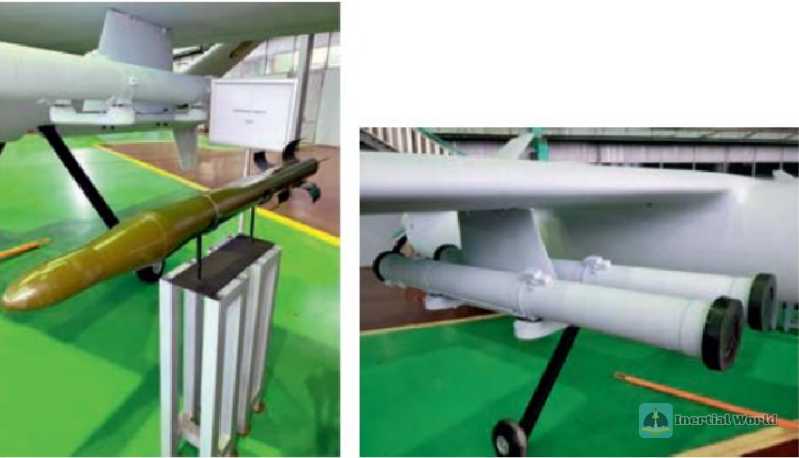
The synthetic aperture radar (SAR) plan uses products from Ukraine’s Radionix company. This is a private military and civilian radar and microwave equipment R&D and production company located in Kiev, which was established not long ago. In recent years, it has made great achievements in the field of radar and has successively launched a number of R-27 series air-to-air missile X-band active radar seeker upgrade solutions. The ARGSN-05R missile-borne active radar seeker of the Neptune shore-to-ship missile also comes from this company. Although the Falcon 300 exhibited a matching SAR radar sample, it may be just a prototype from its rough system back-end structure. After all, the company has not yet launched any mature airborne SAR radar model products.
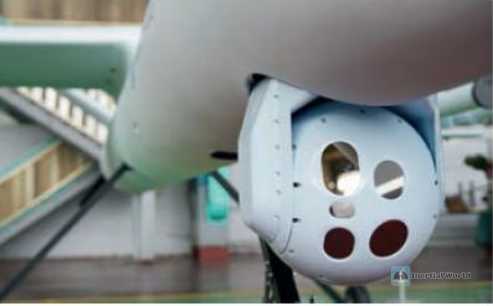
The optoelectronic turret and airborne missile system of drones may seem unfamiliar, but in fact they are a pair of mature shelf products of the Guangzhai Design Bureau - the "BARER-V" 524E helicopter anti-tank missile system. The system mainly includes the OAS-524E optoelectronic turret, GG-524E joystick, CU-524E integrated processor, DB-524E power supply assembly, MD524E multi-function display, AS-524E airspeed sensor, CS524E head-up sight and 2 sets of 2-unit TLC-2V storage and transport launch tube rack combination, as well as 4 RK-2V laser beam-riding guided anti-tank missiles. The system was used several years ago to convert Mi-8 and Mi-171 series transport helicopters into multi-purpose armed types, as well as technical upgrades for Mi-24 and Mi-35 armed helicopters. Only the OAS-524E optoelectronic turret and the RK-2V missile and storage and launch rack assembly were displayed at the exhibition site.
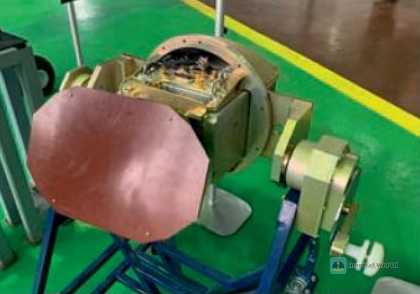
This kind of borrowing seems to be helpful for the rapid development of new aircraft, but a careful analysis will reveal many disadvantages. First, let’s look at the OAS-524E optoelectronic turret. This two-axis stabilized optoelectronic sensor mainly includes 5 optical windows and 4 types of sensors, namely a stepping daytime CCD with wide, medium and narrow fields of view, an infrared CCD with a 3-stepping field of view, a laser rangefinder and a laser beam illuminator. Although it has all the necessary sensors, the daytime and infrared CCDs have only 13.5 and 7 times zoom capabilities respectively. The number of pixels on the array of the two sensors is far behind the dual 30x 1080P imaging capability of the CMX-15D type used on the Turkish TB-2, which was introduced by the Ukrainian army in 2019 and has been very popular in recent years. The optical reconnaissance effect and low temperature and low pressure reliability of the OAS-524E optoelectronic turret are acceptable for armed helicopters used in low-altitude short-range combat, but are obviously not enough for long-flight or medium-altitude high-speed drones used in medium-altitude combat.
The RK-2V missile is an air-to-ground anti-tank missile with a length of 1.917 meters, a diameter of 130 mm (including the diameter of the packaging tube of 140 mm), and a weight of 47 kg. The helicopter launch range is 7,500 meters. The overall appearance and guidance method are very similar to the Russian-made "Chrysanthemum". When the tandem armor-piercing warhead is installed, it can penetrate the 800 mm thick basic armor behind the explosive reactive armor; when the high-explosive warhead is used, 900 2-3 gram high-speed fragments can be released during the explosion. According to the Light Design Bureau, the range of the model supporting the "Falcon" will be increased to 10 kilometers, but this weapon is also not suitable for drones. First of all, the helicopter’s low-altitude laser beam guidance mode and special high-speed straight attack trajectory cannot meet the launch needs of drones at normal combat altitudes of about 4,000 meters. This is also the fundamental reason why all existing mature reconnaissance and strike drones use semi-active laser guidance mode.
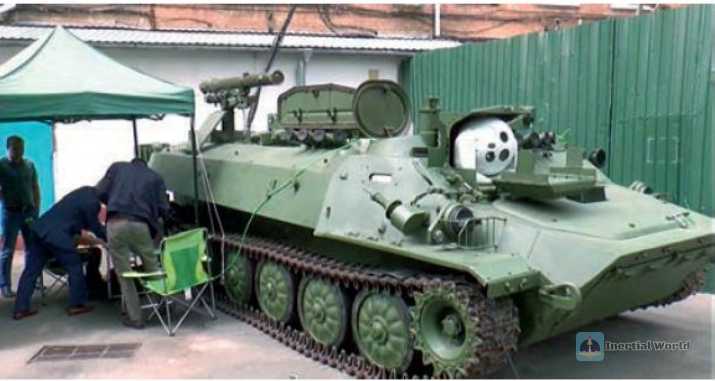
Secondly, the missile is launched by a detachable booster after being pushed out of the launch tube and then ignited. This launch method and its large size and weight are completely contrary to the current trend of miniaturization, lightweight and simple and practical ejection ignition or launch beam launch of drone ammunition. In addition, the dedicated non-standardized rack is not conducive to drones carrying multiple weapons at a time to perform multiple tasks.
Finally, even if the guidance method of RK-2V is improved, there are still many original design problems. For example, the removal of the original tail laser beam receiver assembly and the installation of a semi-active laser detector on the head will cause the center of gravity of the whole missile to change, and the rotation-stabilized missile body design cannot meet the needs of laser detector stable guidance. The aerodynamic layout changes brought about by the change of guidance mode are no different from the new development, and the laser semi-active irradiation module needs to be integrated in the optoelectronic turret. The brochure of the Light Design Bureau states that the missile has only three types: laser beam riding, radar and TV guidance. It also specifically mentions that the laser module in the optoelectronic sensor is the only component that needs to be purchased in the future. From this, it can be inferred that the Light Design Bureau obviously realized that there would be problems in directly transplanting the helicopter’s weapon system to the UAV, and expressed the intention to adopt a new guidance mode.
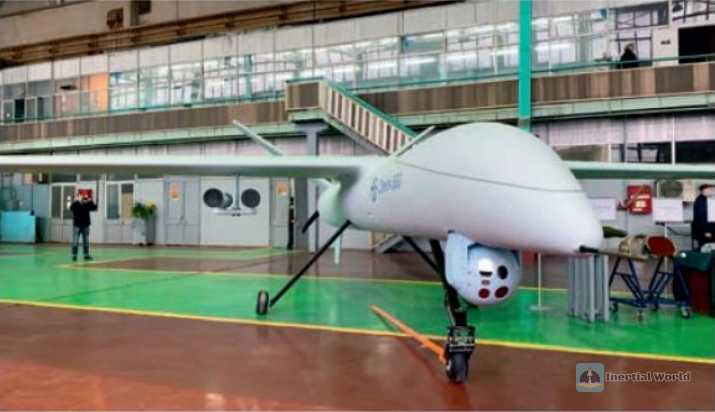
In fact, although this helicopter modification kit has been launched for many years, it has never been exported due to overall performance and other reasons. In order to expand sales, a vehicle-mounted anti-tank model integrated on the MTLB armored vehicle was also exhibited this year.
Unclear future development
As Ukraine’s first purely domestically produced reconnaissance and strike integrated drone, the Falcon 300 obviously has many shortcomings in design. It is actually a concept of the Light Design Bureau, which specializes in ground equipment, hoping to "borrow chickens to lay eggs" and combine its mature anti-tank and shore-to-ship missile system technology with the popular reconnaissance and strike drones in recent years. However, the design bureau is weak in the aviation field, which leads to various problems in the aerodynamic design of the cross-border developed Falcon, as well as various problems with the low-altitude weapons originally used by helicopters when they are in the middle and high altitudes. The prototype looks like it has everything, but if it really wants to fly out the advertised performance, the existing design is definitely not enough. However, as long as the Guangzang Design Bureau can develop a new cost-effective airborne ammunition based on its own accumulated technology in land-based missile weapon systems to meet the actual needs of UAVs, and form a strong alliance with other powerful aviation and electronic design bureaus in Ukraine, it is entirely possible for the Falcon 300 to soar into the sky.






